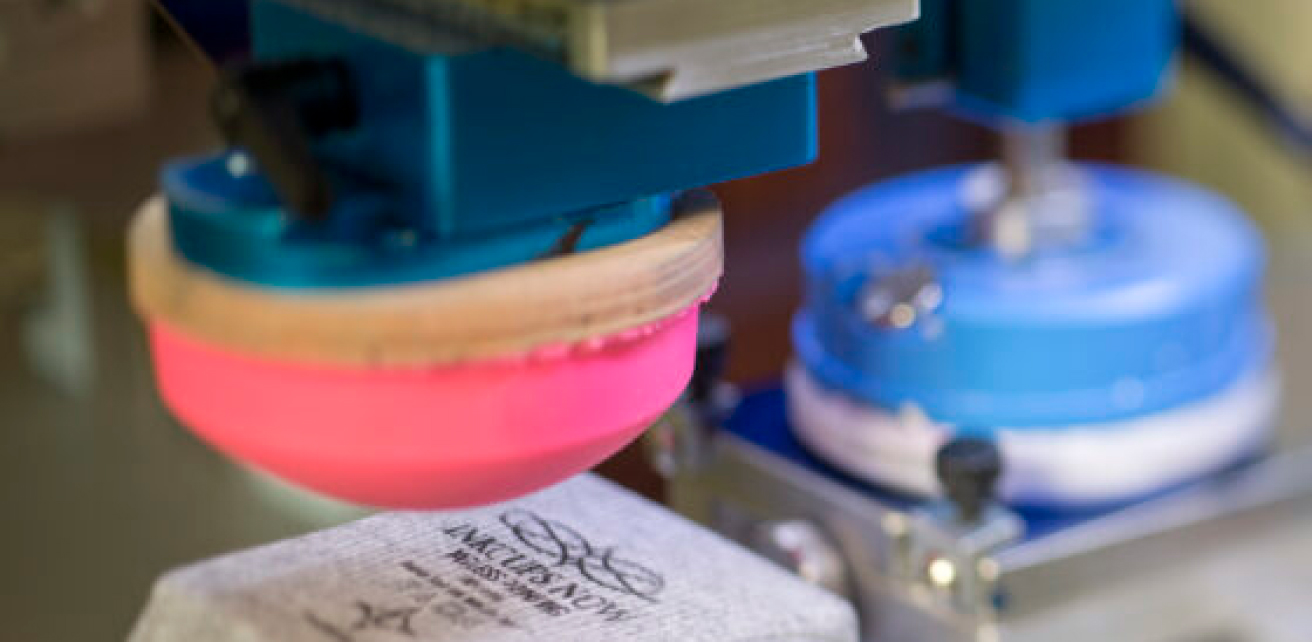

Pad printing is a versatile printing technique that involves transferring an image from a silicone pad onto a substrate. This process is widely used to print on three-dimensional objects and irregular surfaces where other printing methods might be less effective.
Definition and Process
Pad printing, also known as tampography, involves the following steps:
Image Creation: An image is created on a printing plate, which is usually made of steel or a polymer. This plate is etched with the desired design.
Ink Application: The plate is covered with ink, and a doctor blade is used to remove excess ink, leaving ink only in the etched areas.
Ink Transfer to Pad: A soft silicone pad presses down onto the inked plate, picking up the inked image. The pad's flexibility allows it to conform to the shape of the plate, ensuring a complete transfer of the ink.
Ink Transfer to Substrate: The pad then moves to the substrate (the item being printed), pressing down to transfer the inked image. The pad’s ability to wrap around shapes allows it to print on curved, uneven, and textured surfaces.
Advantages of Pad Printing
Versatility: Capable of printing on a wide range of materials, including plastics, metals, glass, ceramics, and textiles.
Complex Shapes: Ideal for printing on objects with irregular shapes, such as promotional items, medical devices, and electronic components.
Fine Detail: Capable of reproducing fine details and intricate designs with high precision.
Multicolor Printing: Can be adapted for multicolor printing, making it suitable for detailed and colorful designs.
Limitations of Pad Printing
Speed: Generally slower than other printing methods like screen printing or digital printing, especially for large production runs.
Setup Cost: Initial setup costs can be higher due to the need for custom printing plates.
Limited Durability: Prints may not be as durable as those produced by methods like screen printing or UV printing, particularly on items subjected to frequent handling or harsh conditions.
Pad printing is commonly used in industries such as:
Promotional Products: Printing logos and designs on pens, keychains, and other promotional items.
Medical Devices: Marking medical instruments and components with high precision.
Electronics: Printing on buttons, dials, and other electronic parts.
Automotive: Marking various automotive components.
In summary, pad printing is a versatile and precise printing method that excels in printing on complex shapes and surfaces, making it invaluable in various industrial and commercial applications.





